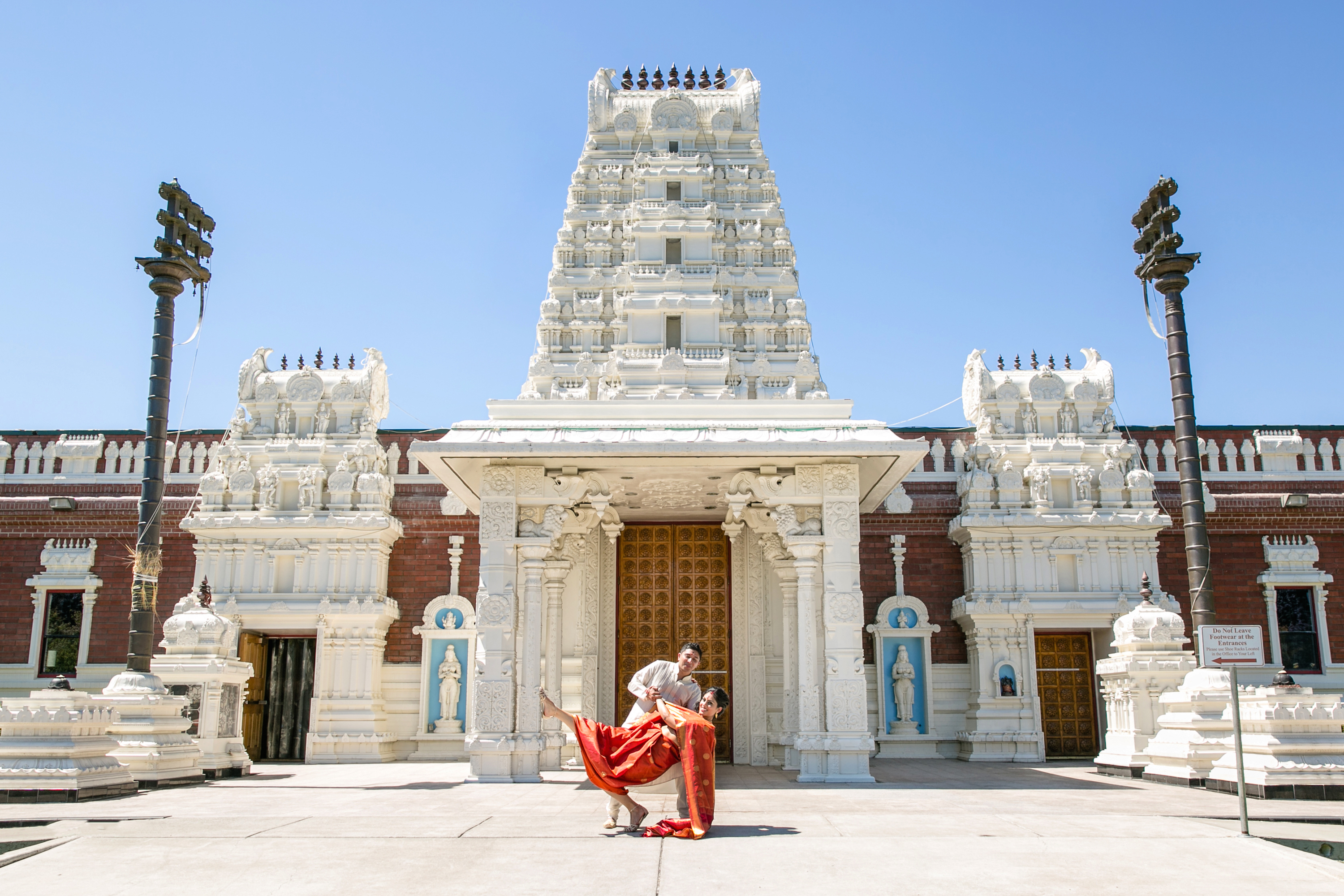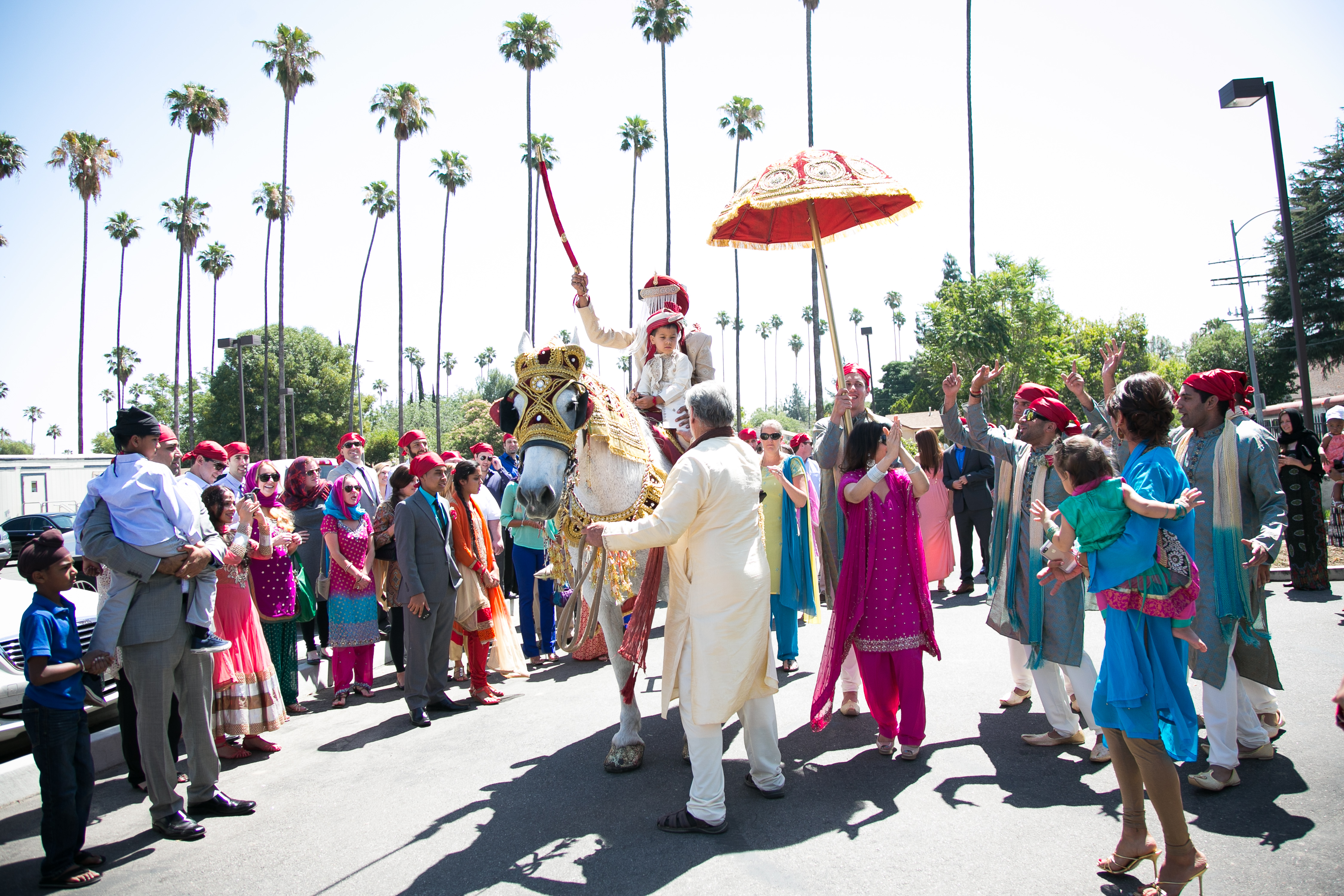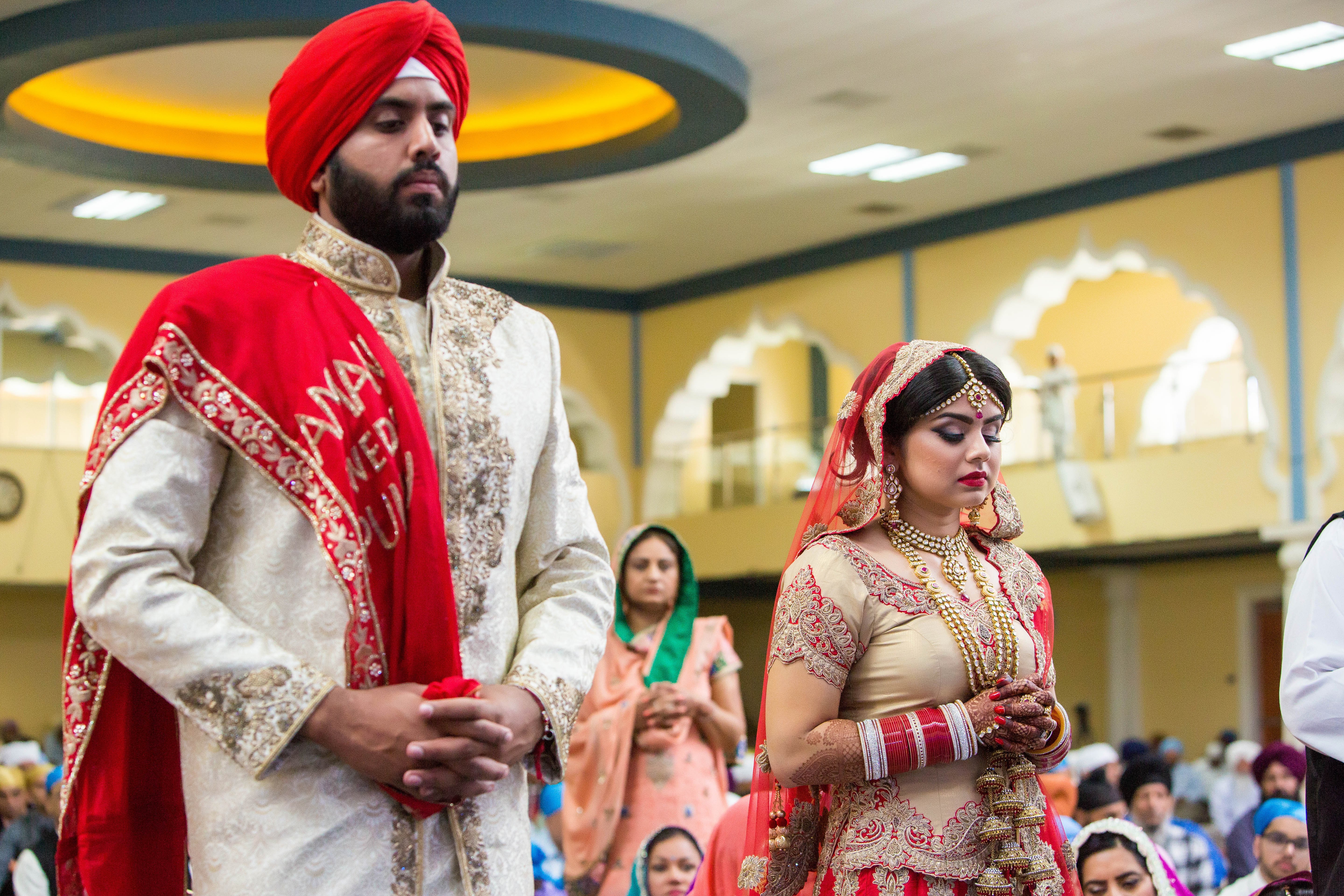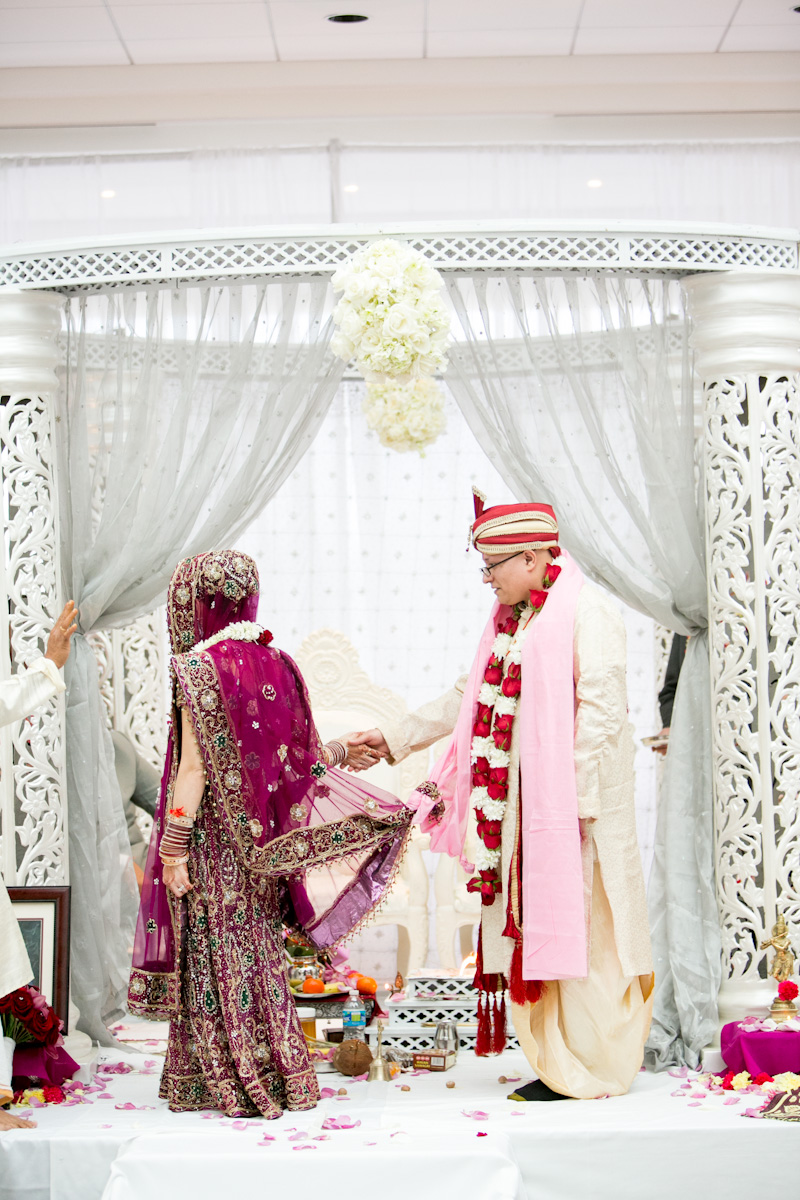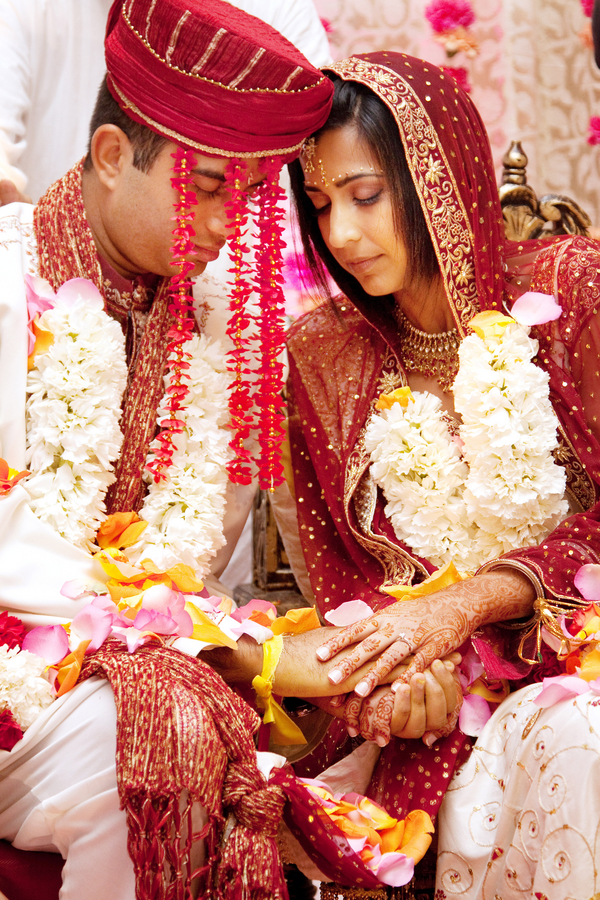The Sikh Wedding rituals themselves often take place in a temple, such as a gurudwara. The marriage hall is called the pandal; it is where family and friends gather to watch the bride and groom officially join together as a married couple. The ceremony is often held in a gurudwara, or a Sikh temple.
From Raman & Amit’s Sikh Hindu Wedding
Sikhism does not permit for priests, who may become too filled with ego. Rather, a custodian of the Guru Granth Sahib will read the relevant passages of the book and marry the couple.
Baraat
After the groom is dressed in his wedding attire, he mounts a white horse – decorated with colorful adornments as well – to the pandal. The horse must be white, as it represents peace and submissiveness of the powerful horse to the groom. The groom looks truly royal during the baraat, as his family sings folk songs and dances before his departure.
Nowadays, many Sikh grooms only ride a short distance to the wedding hall, or arrive in a flower-decorated car instead. The guests who are involved in the baraat have a privileged status and are often members of the groom’s family or close friends. The men will usually cover their heads for this formal occasion.
After the groom dismounts, he is welcomed by the bride’s family with prayers, sweets, and cheers.
Milni
After reading the prayers from the Ardas, the bride’s father welcomes the groom and gifts him an envelope of money. Only male relatives participate in this warm welcome.
Anand Karaj
The officiating custodian brings out a Guru Granth Sahib decorated in beautiful cloth. All guests in the marriage hall remove their shoes and cover their heads. Guests will all bow to the Guru Granth Sahib, and some offer token money.
The bride’s family guides both the groom and then the bride to a cushion, mattress, or raised platform (mandap) where the ceremonies will begin. In ancient custom, the bride has her face covered by a veil to protect her from the evil eye, but the groom removes his sehra at this point.
Lavan Pheras
The officiator reads prayers and sings hymns to weclome the blessings of God for the marriage. The bride’s father helps her tie the groom’s dupatta or free-flowing cloth to her pallu, as a symbol of unity.
The bride and groom will both bow to the Guru Granth Sahib at the beginning and end of each phera read from the holy book.
After the reading, the bride and groom walk around the Guru Granth Sahib, joined together by the tied cloth. The first four pheras represent the warding off of evil by purifying the holy book.
Anand Sahib
The ceremony concludes with singing the Song of Bliss, Anand Sahib. It takes about an hour to complete, and karah prasad is eaten immediately afterward.
The four lavans explain the four stages of married life. The first verse is about the performance of duty towards family and community; the second verse acknowledges mutual love between the bride and groom; the third verse celebrates detachment together in the midst of hectic family life; and the fourth verse speaks of the final stage of harmony, where human love translates into love for God.
Garlands
The couple may exchange rings after the prasad has been distributed. The groom’s father then puts a garland of flowers on the couple, followed by the groom’s mother, and then the bride’s parents.
Lunch
After the garland ceremony, lunch is often provided within the marriage hall itself. Sikh wedding ceremonies are often performed in the morning and take a few hours, ending around noon.
After the marriage ceremony, the bride’s sisters may tease the groom by stealing his shoes and demand a bribe of money for their return. This ceremony can be done either before or after the wedding, but is usually done in jest after the formal rituals are complete.
The post-wedding formalities vary by modernity and preference but generally begin after the official rituals are completed and the couple is legally wed.
Check out the rest of the series here:
Wedding Traditions – You are here!

